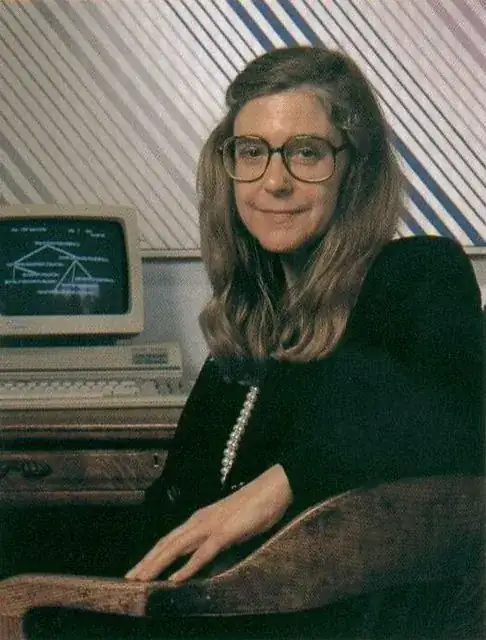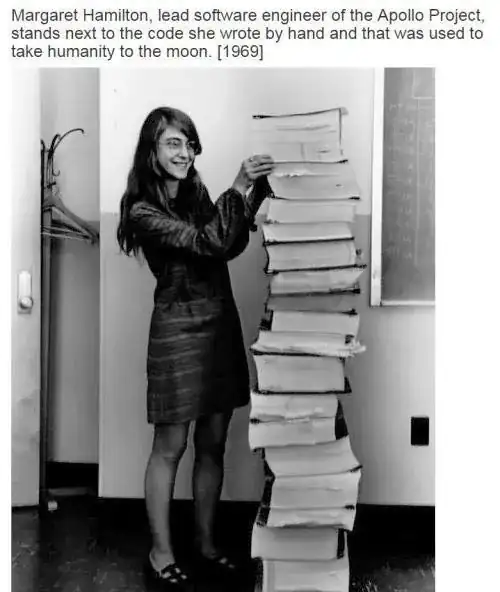The photo depicts Margaret Hamilton
Yes, this is an official NASA picture of her:

Margaret Hamilton was the lead software engineer of the Apollo Project
Indeed, from the same source:
Margaret Hamilton, leader of the team that developed the flight software for the agency's Apollo missions [...]
Depicted is a print-out of the Apollo Project code
Yes, she says so herself in a Vox interview:
"In this picture, I am standing next to listings of the actual Apollo Guidance Computer (AGC) source code," Hamilton says in an email. "To clarify, there are no other kinds of printouts, like debugging printouts, or logs, or what have you, in the picture."
The source code is here (pdf scans) and there are about 11,000 pages, which is not inconsistent with what we see on in the picture: the paper is likely continuous stationery and 11,000 pages of that are 165cm tall, since a box of 2,000 is about 30cm (ref).
Margaret Hamilton wrote the depicted code by hand
It's unclear what it means:
Is the code in the pile handwritten? No, it's printed with a typewriter or a daisy printer -- see the scans.
Was it written by her in rope core memory? No, it was written in core rope memory by hand by a team according to her interview on Vox:
The process of actually coding in the programs was laborious, as well. The guidance computer used something known as "core rope memory": wires were roped through metal cores in a particular way to store code in binary. "If the wire goes through the core, it represents a one," Hamilton explained in the documentary Moon Machines. "And around the core it represents a zero." The programs were woven together by hand in factories. And because the factory workers were mostly women, core rope memory became known by engineers as "LOL memory," LOL standing for "little old lady."
Margaret Hamilton single-handedly wrote the code
No. Vox says so, but doesn't cite the source:
It's just her and her code.
NASA contradicts this by saying that it was a whole team lead by her, which seems entirely more likely:
The Apollo flight software Ms. Hamilton and her team developed was truly a pioneering effort

